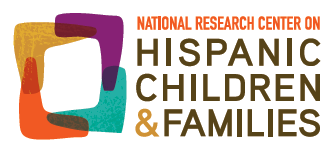Introduction
Child care—especially that which is of high quality—serves a critical dual purpose for families, supporting both parental employment and children’s development. As recognized in a recent White House Executive Order, the costs of providing and obtaining such care are significant, making affordability a key driver of child care access and a matter of national policy concern given its importance to families and the economy. For many Hispanic families, who tend to have high levels of employment but low levels of income, child care costs can pose a barrier to securing and maintaining high-quality arrangements. In addition, the nature of many low-wage jobs—which often involve nonstandard, variable, and/or unpredictable work schedules—can further limit families’ access to affordable care that meets both parents’ and children’s needs.
The U.S. Department of Health and Human Services (HHS) defines affordable child care as that which requires families to pay no more than 7 percent of their household income. Yet nationally, the average annual cost of full-time child care in 2021 was $10,600, an amount equivalent to 10 percent of the average income for a two-parent household and 35 percent for a single-parent household. This cost burden is even greater for families using more expensive types of care, such as center-based care and infant care. Key federal and state programs intended to reduce out-of-pocket child care costs for families with low incomes include Head Start public pre-kindergarten programs and Child Care and Development Fund (CCDF) subsidies. While these public investments in child care have expanded over the last several years, current funds reach only a fraction of eligible children and evidence shows that Latino families tend to be underserved by some of these programs.
In this brief, we use data from the 2019 National Survey of Early Care and Education (NSECE) to report on the affordability of child care for a national sample of Latino households with low income who used nonparental care arrangements on a regular basis (at least 5 hours per week) for children up to age 13, and had at least one child younger than age 6 and not yet in kindergarten. Within this sample, we examine families’ weekly out-of-pocket costs as a proportion of their household income and compare this to the federal guideline for affordable child care (7% or less of total income). We then look at whether child care affordability varies by three features of families’ care arrangements (number of hours, number of providers, and type of care) and across three potential drivers of child care costs (whether the household includes members who are immigrants, family income level, and the presence of children younger than age 3 in the home). Prior research shows that child care is most expensive for families with children under the age of 3. Additionally, households with immigrant members and those with either very low incomes or incomes just above eligibility thresholds may experience challenges locating child care they can afford.
Key Findings
As the most recent national data available on what households spend on child care, the NSECE 2019 provides an important accounting of child care affordability for families in the United States following decades of increased, but relatively limited, public investments in early childhood and just prior to the global COVID-19 pandemic. Taken together, our findings suggest a need for sustained and varied investments to support affordable child care access for Hispanic families with low incomes. While public subsidies appear to offset costs for some families, many Latino families either rely on unpaid providers or spend an exceedingly high percentage of their budget on child care, both of which may result in precarious or unsustainable arrangements. Specifically, we find that:

